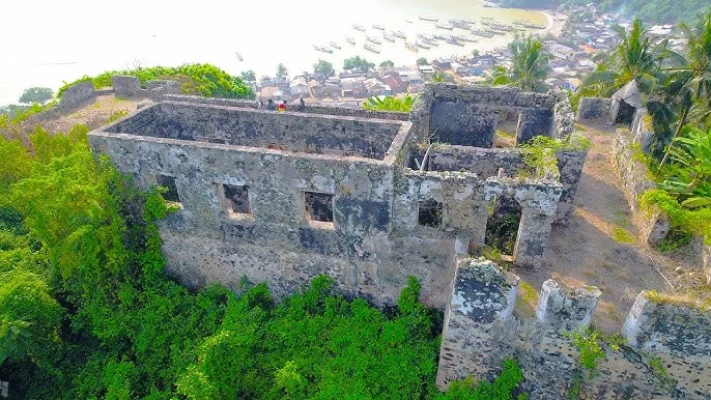Rejecting Compromise: Nkrumah’s...
November 20, 2025

Fort Batenstein was a significant fort and trading post established by the Dutch on the Gold Coast in 1656, located near Butre (historically spelled as Boutry).
The fort played a crucial role in European trade and exploitation in West Africa and was ceded to Britain in 1872 along with the entire Dutch Gold Coast.
One of the fort's notable historical events was the signing of the Treaty of Butre on August 27, 1656, between the Dutch and the Ahanta people. This treaty marked the Dutch's formal control over the region and their influence on local politics and trade.
In recognition of its historical significance, Fort Batenstein was designated a World Heritage Site in 1979, along with several other castles and forts in Ghana. This designation underscores its importance in the context of European colonial history and the transatlantic slave trade.
The name "Batenstein" translates to "profit fort," which historian Albert van Dantzig interprets as a reflection of the cynical humor of the Dutch West India Company directors. Other forts with similarly ironic names include Vredenburgh ("peace borough"), Goede Hoop ("Good Hope"), and Lijdzaamheid ("Patience").
Fort Batenstein was constructed by the Dutch West India Company primarily to thwart the Swedish Africa Company's attempts to establish trading posts on the Gold Coast. Hendrik Carloff, a former employee of the Dutch West India Company, had founded a trading lodge at Butre in 1650.
In 1652, at the instigation of the Dutch, the lodge was attacked by the people of Encasser. To prevent the Swedes from returning, the Dutch began building the fort on a hill overlooking Butre Bay, completing it by 1656.
The Dutch then signed a treaty with the local population, asserting their authority over the region.
In the 18th century, a sawmill was constructed at Fort Batenstein to provide wood for repairing forts and ships. The fort gained prominence in 1837 during the Dutch–Ahanta War, becoming the center of Dutch military efforts on the coast.
After the war, the Dutch declared Ahanta a protectorate and made the commandant of Fort Batenstein the vice governor, citing the Treaty of Butre of 1656. Despite efforts to establish a gold mine near Butre, the venture failed to produce any gold.
When the Dutch sold their possessions on the Gold Coast to the United Kingdom in 1872, the people of Butre protested the change in ownership. In 1873, they took to the streets waving Dutch flags and firing guns.
In retaliation for an attack on Dixcove, a British trading post, Butre was shelled by the British in October 1873.
Fort Batenstein remains a testament to the complex history of European colonization and trade in West Africa. Its designation as a World Heritage Site highlights its enduring historical and cultural significance.
Explore the list of Forts in Ghana below.
November 20, 2025
November 17, 2025
November 13, 2025
November 6, 2025
November 5, 2025
November 4, 2025
October 31, 2025
October 30, 2025
October 30, 2025
October 30, 2025